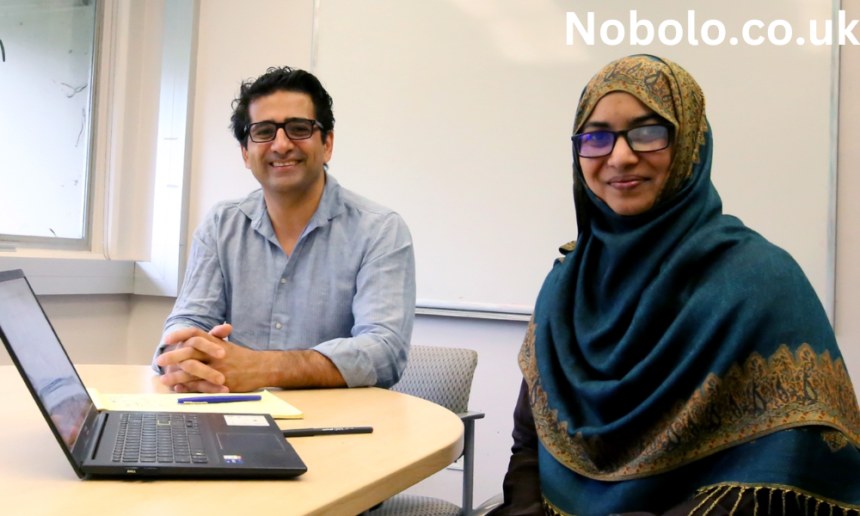Kerem Y. Çamsarı is a highly respected figure in the fields of electrical and computer engineering, known for his groundbreaking contributions to probabilistic computing, spintronics, and quantum information science. With a career marked by innovative research, numerous accolades, and a significant presence in academic literature, Çamsarı’s work is frequently referenced by scholars worldwide. His Google Scholar profile serves as a window into the depth and breadth of his scholarly contributions.
Early Life and Educational Background
Foundations in Engineering and Science
Kerem Y. Çamsarı’s academic journey began with a strong foundation in engineering. His interest in computational systems and quantum mechanics set the stage for his later work. He pursued his undergraduate studies in electrical engineering, where his innate curiosity about the intersection of physics and computation was first kindled.
Advanced Education
In 2015, Çamsarı earned his Ph.D. in Electrical and Computer Engineering from Purdue University. His doctoral research laid the groundwork for his future innovations in probabilistic computing and spintronics. During his Ph.D., he explored how probabilistic bits (p-bits) could revolutionize the way computations are performed, bridging the gap between classical and quantum systems.
Academic Career
Postdoctoral Work at Purdue University
Following his Ph.D., Çamsarı continued at Purdue University as a postdoctoral associate until 2020. During this time, he expanded on his research in probabilistic computing, focusing on practical implementations of p-bits and p-circuits. His work during these years contributed significantly to advancing the field of domain-specific hardware accelerators.
Faculty Appointment at UCSB
In 2020, Çamsarı joined the University of California, Santa Barbara (UCSB) as an Assistant Professor in the Department of Electrical and Computer Engineering. His innovative research and teaching earned him a promotion to Associate Professor in 2024. At UCSB, Çamsarı’s lab became a hub for cutting-edge research, attracting top-tier students and collaborators from around the globe.
Research Focus
Probabilistic Computing
The cornerstone of Kerem Çamsarı’s research is probabilistic computing. By introducing probabilistic bits (p-bits), Çamsarı demonstrated a way to merge the deterministic nature of classical computing with the probabilistic attributes of quantum systems. This approach enables the development of efficient and versatile computational hardware capable of solving complex optimization problems.
Spintronics
Another significant area of Çamsarı’s research is spintronics, a field that leverages the intrinsic spin of electrons to store and process information. His work in this domain has led to the design of innovative devices that offer enhanced energy efficiency and scalability compared to traditional electronics.
Quantum Information Science
Kerem Çamsarı’s contributions to quantum information science involve exploring the boundaries of quantum mechanics to develop new computational paradigms. His research has implications for quantum error correction, quantum cryptography, and other areas critical to the advancement of quantum technologies.
Also Read: Sydney Ness
Notable Publications
Kerem Camsari’s Google Scholar profile highlights an impressive array of publications in leading journals such as Nature, Science Advances, Physical Review X, and Nature Electronics. Some of his most cited works include:
- Probabilistic Computing with p-bits This paper introduced the concept of p-bits and outlined their potential applications in solving complex optimization problems.
- Energy-Efficient Spintronic Devices In this publication, Çamsarı discussed the design and implementation of spintronic devices that achieve remarkable energy efficiency.
- Quantum-Classical Hybrid Systems This work explored the integration of quantum systems with classical computing architectures to create hybrid models that leverage the strengths of both paradigms.
Impact Metrics
Citations and h-Index
Kerem Camsari’s Google Scholar profile provides insight into his impact on the academic community. With thousands of citations and a steadily rising h-index, his work has become foundational in several emerging areas of research. These metrics reflect both the quality and influence of his contributions.
Collaboration Network
Through his publications, Çamsarı has collaborated with prominent researchers and institutions worldwide. His Google Scholar profile reveals an extensive network of co-authors, demonstrating his collaborative approach to advancing scientific knowledge.

Awards and Recognition
Kerem Çamsarı has received numerous awards for his contributions to science and engineering, including:
- IEEE Magnetics Society Early Career Award
- Bell Labs Prize
- ONR Young Investigator Award
- NSF CAREER Award
In 2024, he was named an IEEE Distinguished Lecturer for the Magnetics Society, further cementing his reputation as a leader in his field.
Teaching and Mentorship
Role at UCSB
As a professor at UCSB, Çamsarı has been instrumental in shaping the next generation of engineers and scientists. His courses on probabilistic computing and spintronics are highly sought after, and his mentorship has guided many students toward successful careers in academia and industry.
Fostering Innovation
Çamsarı’s lab at UCSB is known for fostering a culture of innovation. Students and postdoctoral researchers in his lab are encouraged to explore bold ideas and contribute to cutting-edge projects.
Influence on Industry
Bridging Academia and Industry
Kerem Çamsarı’s research has significant implications for industry, particularly in areas such as artificial intelligence, cybersecurity, and energy-efficient computing. His work on p-bits and spintronic devices is paving the way for the development of next-generation technologies.
Patents and Commercialization
In addition to academic publications, Çamsarı has filed several patents related to his research. These patents highlight the practical applications of his work and its potential to transform industries.
Future Directions
Expanding the Scope of Probabilistic Computing
Kerem Çamsarı aims to further explore the potential of probabilistic computing in solving real-world problems. By refining the design of p-circuits, he seeks to develop systems that are not only efficient but also scalable.
Integration with Quantum Computing
As quantum computing continues to evolve, Çamsarı’s research on hybrid quantum-classical systems is expected to play a pivotal role in bridging these technologies. His work may lead to breakthroughs in quantum error correction and fault-tolerant quantum computing.
How to Access Kerem Camsari’s Google Scholar Profile
For those interested in delving deeper into his work, Kerem Camsari’s Google Scholar profile is an invaluable resource. It provides a comprehensive list of his publications, citation metrics, and details about his co-authors. Researchers, students, and industry professionals can use this profile to gain insights into his contributions and explore potential collaborations.
Steps to Access the Profile
- Visit Google Scholar.
- Enter “Kerem Camsari” in the search bar.
- Click on his profile to view his publications and metrics.
Conclusion
Kerem Y. Çamsarı’s work has left an indelible mark on the fields of probabilistic computing, spintronics, and quantum information science. His Google Scholar profile serves as a testament to his academic achievements and the impact of his research. As he continues to push the boundaries of what is possible in computing and electronics, his contributions are sure to inspire future generations of scientists and engineers.
For anyone interested in cutting-edge research at the intersection of physics, engineering, and computation, exploring Kerem Camsari’s Google Scholar profile is a must. His journey from a passionate student to a leading academic exemplifies the power of curiosity, innovation, and collaboration in advancing human knowledge.



